Starting an Assignment
:^) good luck
When starting a project there are a small number of steps to get things set up just right in order to have a smooth and seamless experience. While it is absolutely possible to complete these projects on your own machine and your own installation of R and RStudio, it will be easier and faster to do your work on BU’s SCC. The experience will be more straightforward and basically identical to doing it on your own.
Starting your own git repository and cloning it
In our development of these assignments we used git and github.com to manage our updates and allow for easy sharing. We can now pass these repositories (repos) along to you using GitHub classroom so you can follow the steps within.
Assignment setup tutorial
Every assignment is made available to you via a GitHub Classroom link.
-
Your instructor will give you an assignment link for each assignment. Access the link in a web browser. You may need to log into GitHub. It should bring you to a page like this one:
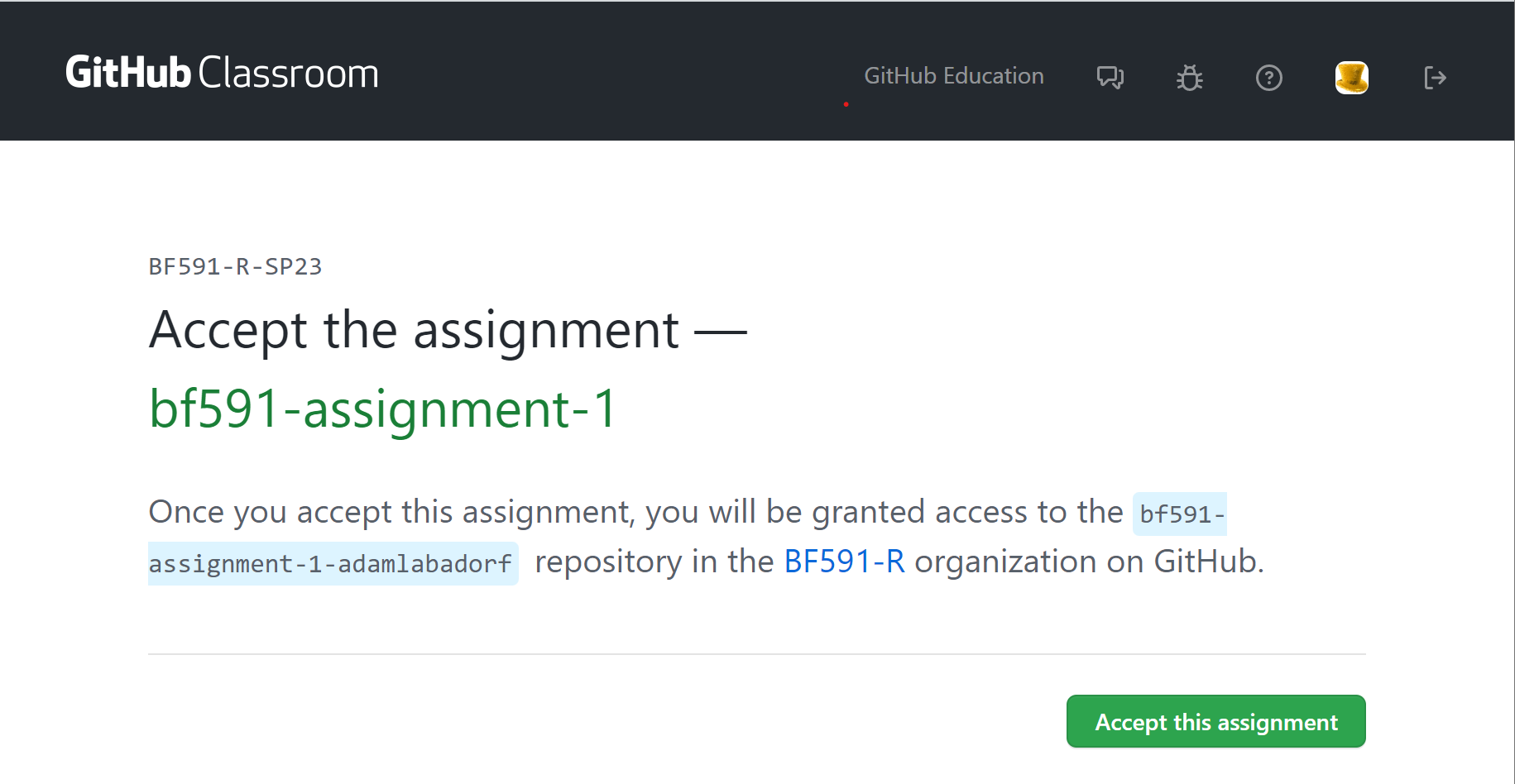 Step 1
Step 1 -
Click “Accept this assignment”, and you will see a confirmation page like this one:
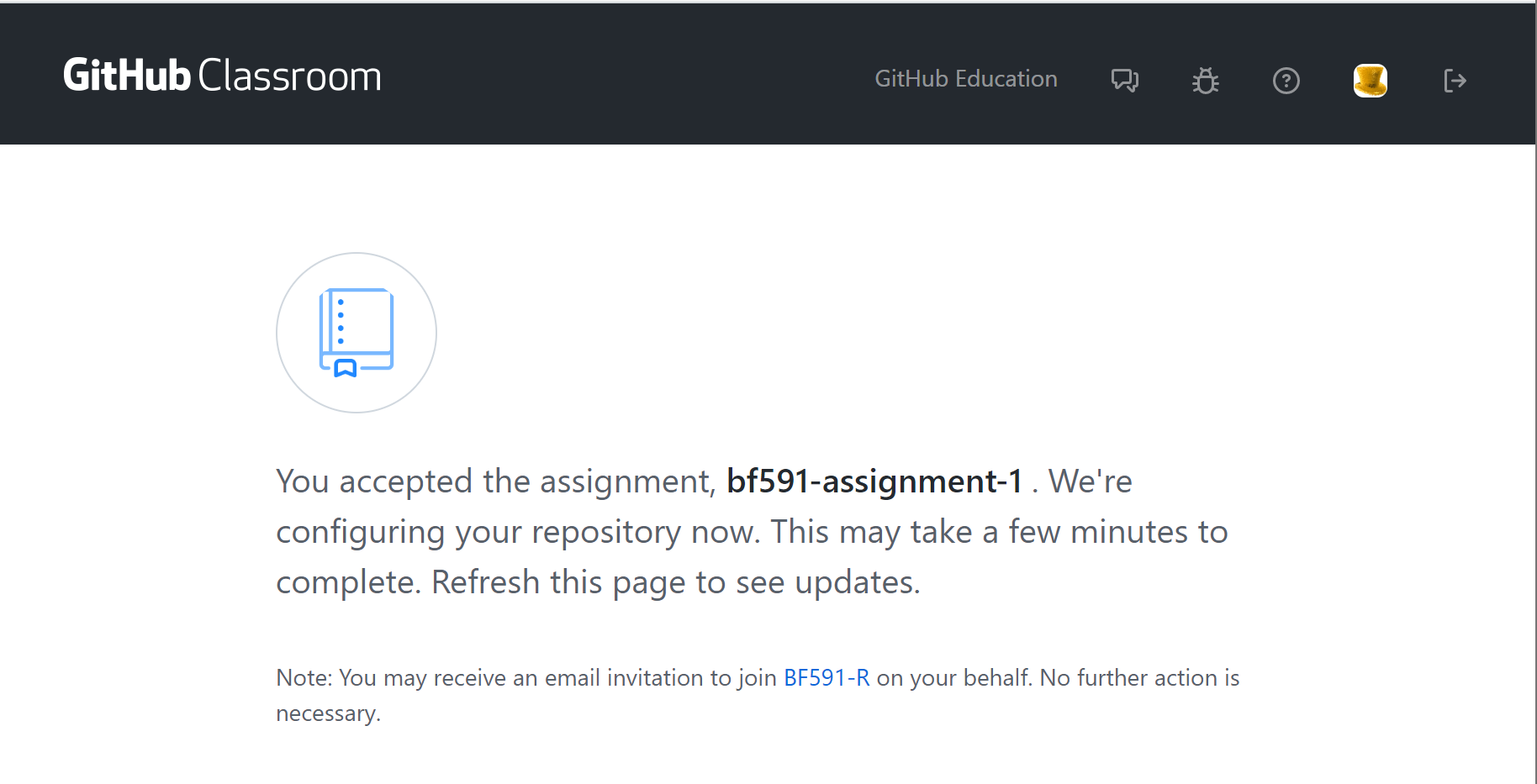 Step 2
Step 2 -
Navigate to our GitHub BF591-R Organization page. You should see a link to your clone repo as well as the other pinned template repos.
Make sure you find the repo that ends in your GitHub username! These repos will have the tag “Private” next to the name. Do not clone the repositories labeled with “Public template”!
Your assignment repo will look something like the following:
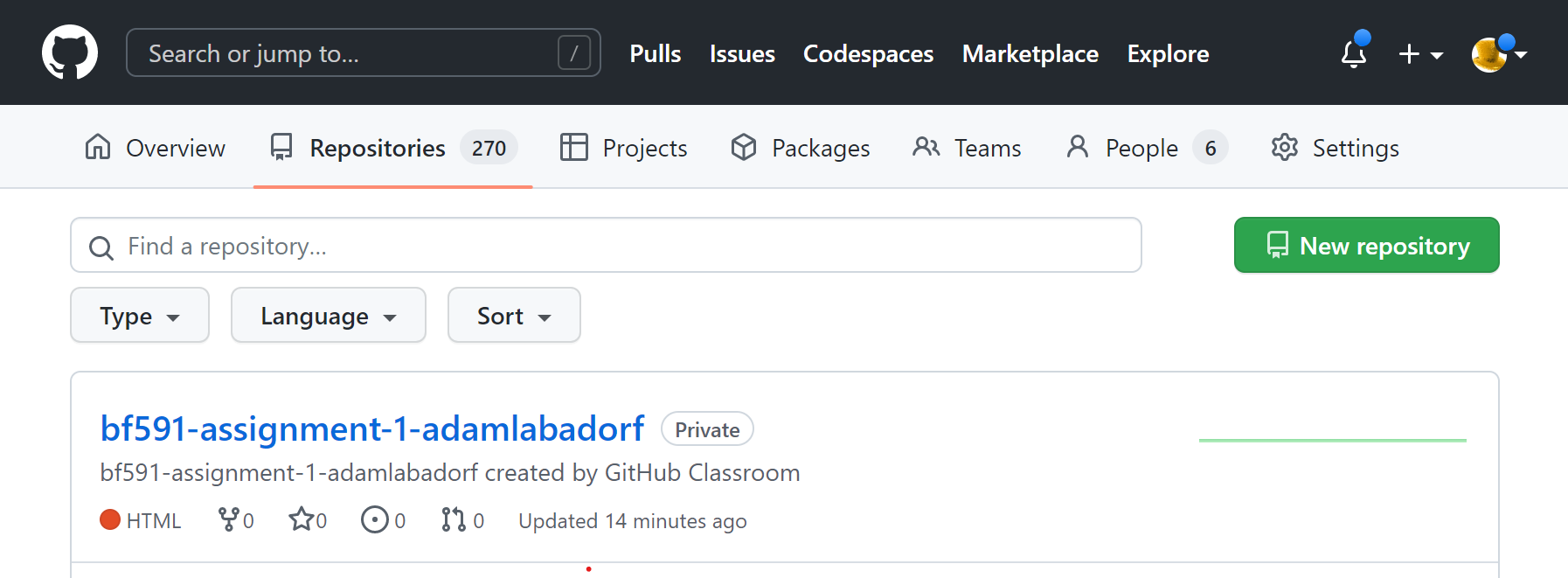 Step 3
Step 3 -
When you click on the link to your repo, you should see something like this:
 Step 4
Step 4 -
Inside this repo, click the big g r e e n button and copy the HTTPS link to your repository.
 Step 5
Step 5Use this link to create a project in RStudio, as described next.
Login to https://scc-ondemand.bu.edu/. Start an interactive R session (Interactive Apps > RStudio Server), use the default settings but increase the hours to like 12 or something.
-
Once your session is loaded and you are login in, select the “New Project” button below the “Edit” button.

-
With the prompt open, select
Version Control>git, and paste your repo’s url into the first prompt. Feel free to rename the project. Make this directory in the class directory (/projectnb/bf591-r/students/BU_username/)
-
Follow these instructions to create a GitHub Personal Access Token.
When RStudio prompts you for your username, enter your GitHub username.
When you are prompted for your password, enter the Personal Access Token you just created.
-
R will download all of the repository contents, and add an
.RProjfile to the directory. This RProject file is useful for switching between R assignments in RStudio. This context menu is in the top right of the RStudio interface: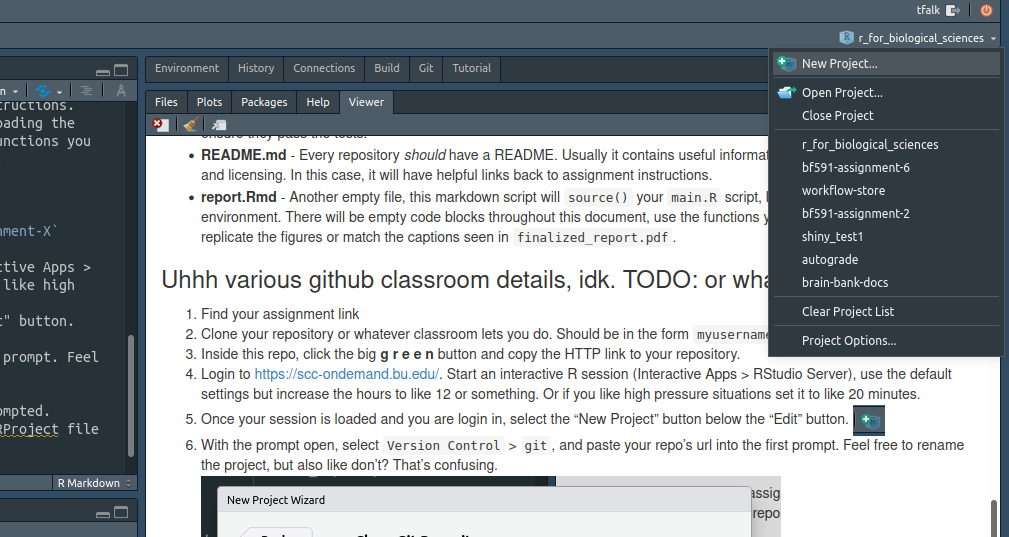
Committing and Pushing with R (and without)
With the RProject set up, you now have a directory on SCC that has cloned your
remote repository in GitHub. At this moment all of the files are the same, since
you have made no progress on your assignment (depressing, I know). In a burst of
productive energy, you will start to make changes to main.R and write your
beautiful, buggy functions. Once you’re done for a little bit, what next? You
could leave it on SCC and it would probably be pretty safe, but what if you want
to share this code easily? Or if a cataclysm strikes Western Massachusetts? Your
changes are gone and life will have lost all meaning.
To prevent this cataclysm, you must add, commit, and push your code back to GitHub.
Using RStudio
-
Save the files you want to commit, and select the Git tab in the top right viewer (by default).

-
You’ll notice the files you changed are listed here, along with varying symbols. A question mark ? means the file is untracked, an M means a tracked file has been modified. A D means a tracked file has been deleted. If I select a file I want to add back to GitHub, I can tick the checkbox and it will switch to the left column. This is called staging a file.

-
Once I’ve staged all the files I want to add, I can click on the Commit button. This brings up another window, which will again list the files you are staging and actually show you the differences you’re making (this is called the diff, based on the GNU utility of the same name). The most important part is the Commit box. A commit is a series of file updates made together, typically to solve a task. It is paramount that you include commit messages, so you can track what it is you’re doing with your work! Just a sentence is usually enough to describe what the changes in this commit are doing.

Once you’ve pressed the commit button, all that’s left to do is to push your commit. This sends the commit to GitHub where it can safely live forever, duplicated across the world and safe from most cataclysms.

- In the same vein, the pull button is useful if your GitHub has been updated more recently than your current SCC directory. This can happen if you’re editing these files from another computer or on GitHub.com directly.
Using the command line
That was kind of a lot of clicking and funny little menus, and my doctor says I am at high risk for a repetitive stress injury, so can’t I just use my keyboard instead? Yes, of course. We’ll use the terminal, which is also built-in to RStudio but really just emulates the standard bash terminal that you would use to interact with SCC normally.
-
Click on the terminal tab at the bottom of your layout (default).

-
Marvel at the wonderful monospace font and rest your hands upon the keyboard. To see how the directory is doing, we can type
git statusto see what files have been changed. Wow! Looks like I have a lot of stuff to deal with. What’s nice is thegitcommand offers a lot of helpful tips for getting me on my way.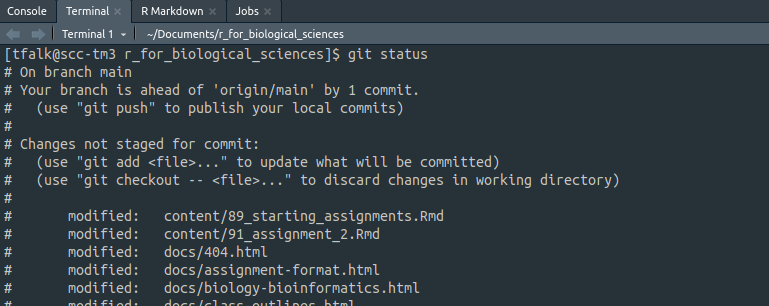
I want to add these files, and I really don’t care how many I had so I am going to use
git add *, which basically adds everything that can be found in the current directory. If I only wanted one or two things, I could specifygit add file1.txt file2.txtand leave the other files alone.Once I have added (or removed
git rm file1.txt) the files I want to commit, I simply usegit commit -m "Added a lot more content to tutorials!to create the commit and add my very important message. Messages are not mandatory but if you slack on being descriptive you will regret it when you come back later to figure out what in God’s name you were doing that day.Finally, with my commit done and files added, I simply say
git pushto send my wonderful code back to GitHub, and I can sit back and marvel at my handiwork.
Put simply, the three commands git add *, git commit -m "message", and git push will save the changes to your code and keep your repository up to date.
Easier than clicking around RStudio but both ways are super valid!